Bears On The Edge
First published in Sanctuary Asia,
Vol. 41
No. 6,
June 2021
Facing A Grim Future
Veteran photographer-naturalist Dhritiman Mukherjee spent 15 years following Himalayan brown bears Ursus arctos isabellinus across Himachal Pradesh, Ladakh and Uttarakhand. Here he introduces us to what he calls “fringe bears” that live on the threshold between wild forest and human habitation in Drass, Ladakh. The proximity to humans has altered bear behaviour during hibernation because of free-ranging livestock and the ample food availability in garbage dumps. This could trigger greater conflict and impact the animals’ health.
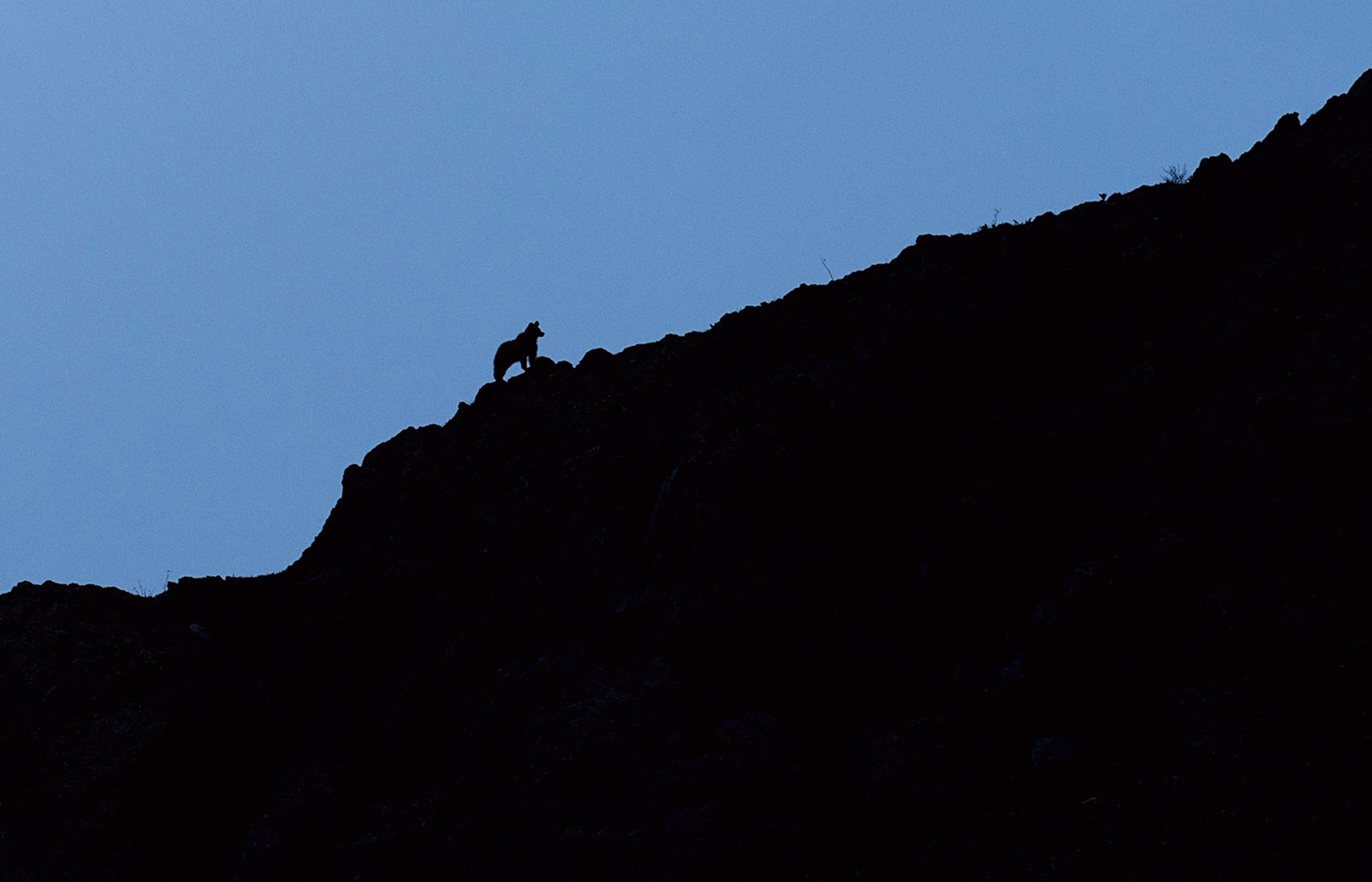
A bear scales a mountain ridge after spotting the photographer who manages to capture a fleeting moment against a pre-dawn sky. Bears habitually forage at Drass at night, returning to the safety of their forests when day breaks. This is relatively new behaviour, suggesting that bears are evolving new strategies to adapt to their anthropogenic environment.
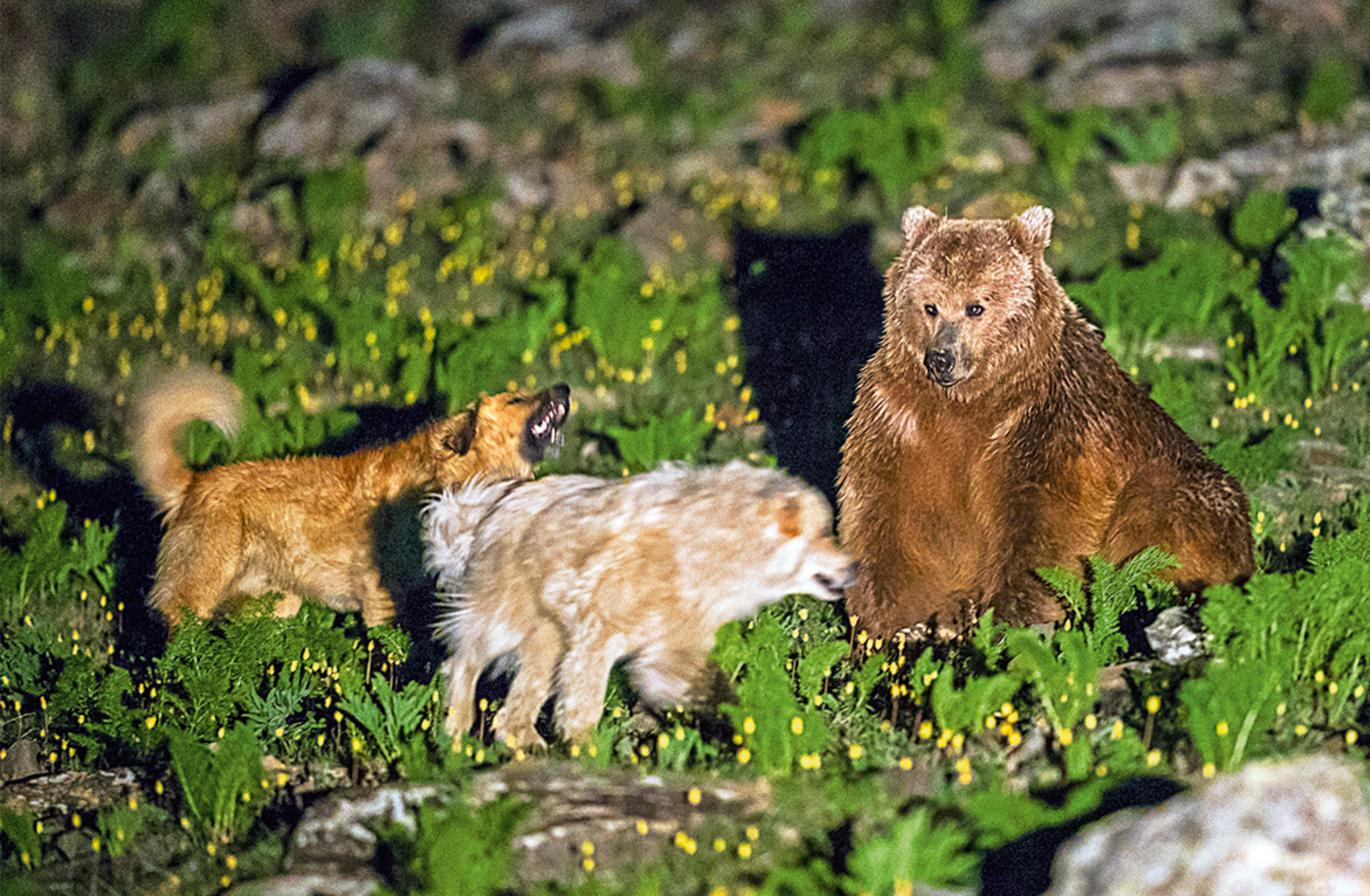
Soon after dusk, an agitated mother, cub in tow, frantically chases free-ranging dogs that pose a threat to her young. Dogs are an increasing danger to wild species across India. In Ladakh, they travel in packs and do not fear even large predators such as bears and leopards, and are a threat to the nests of Black-necked Cranes.
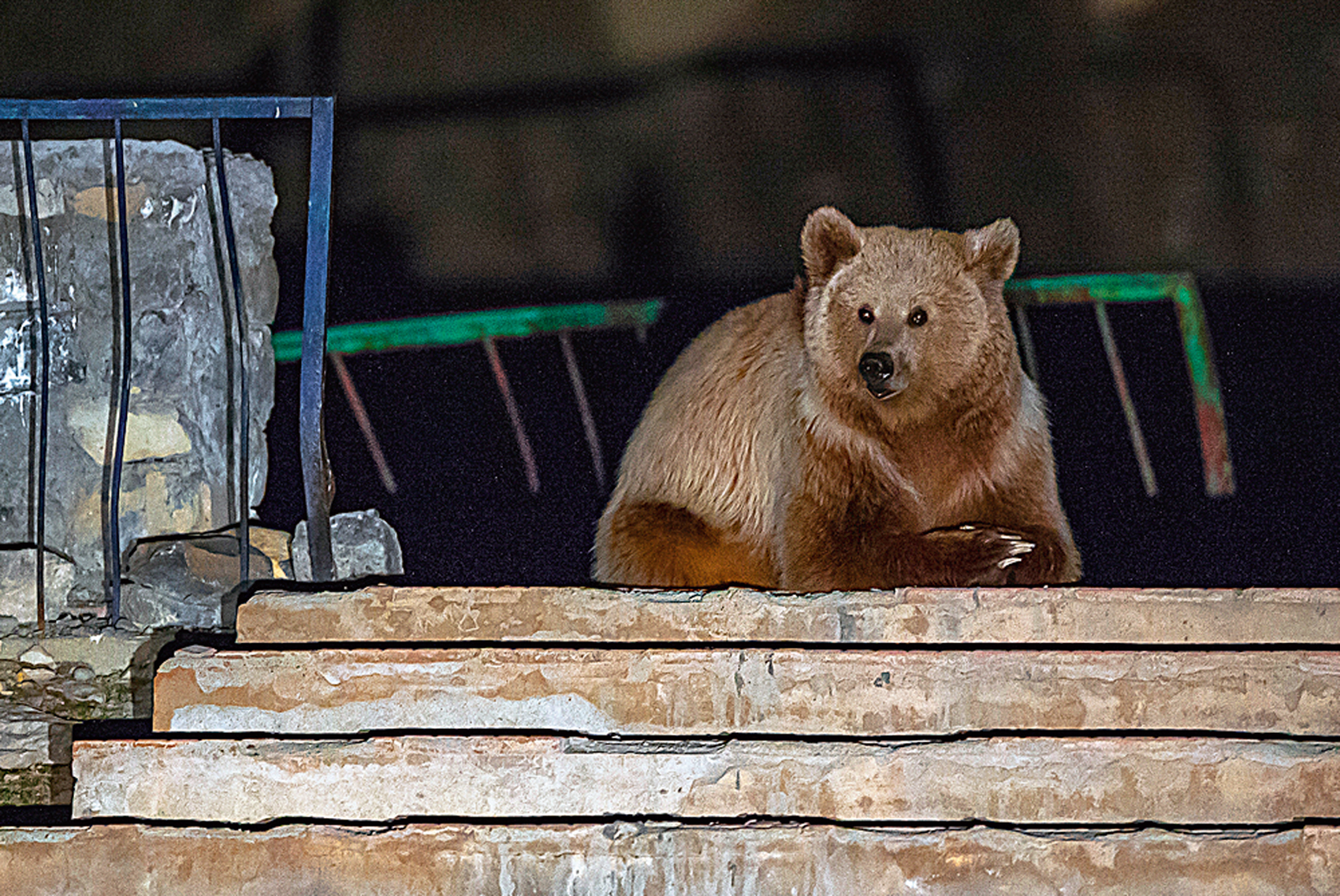
Past 10.30 p.m., a bear approaches construction debris near a temple in the vicinity of an army camp in Matayen. With their acute sense of smell, bears are easily drawn to the smell of food being cooked.
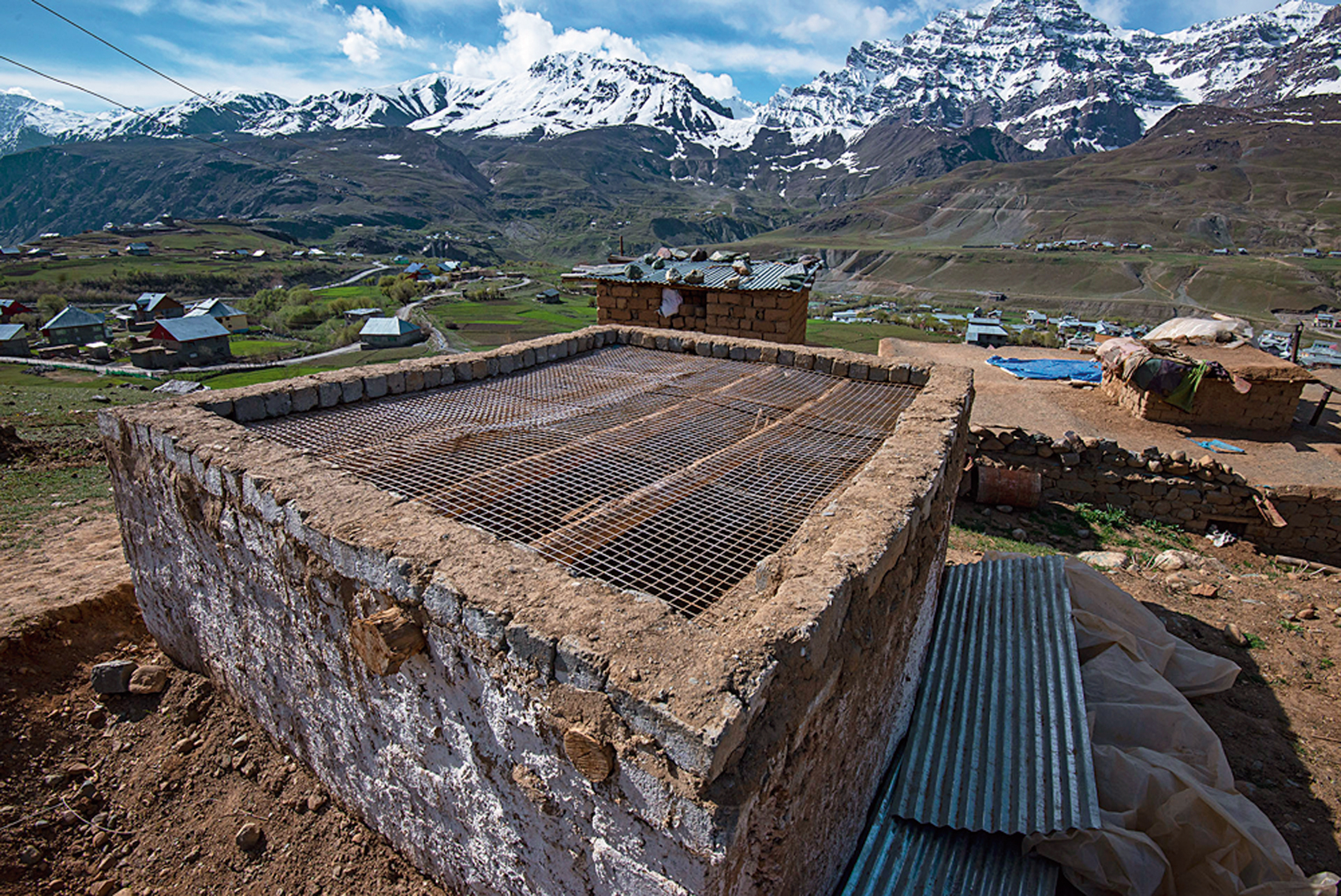
Given the increasing proximity of bears, locals are being encouraged to predator-proof livestock corrals. Cases of human-wildlife conflict rise because bears are omnivorous and will readily prey on sheep and goats kept in unprotected corrals. Secure corrals help to reduce the risk of retaliatory killings.
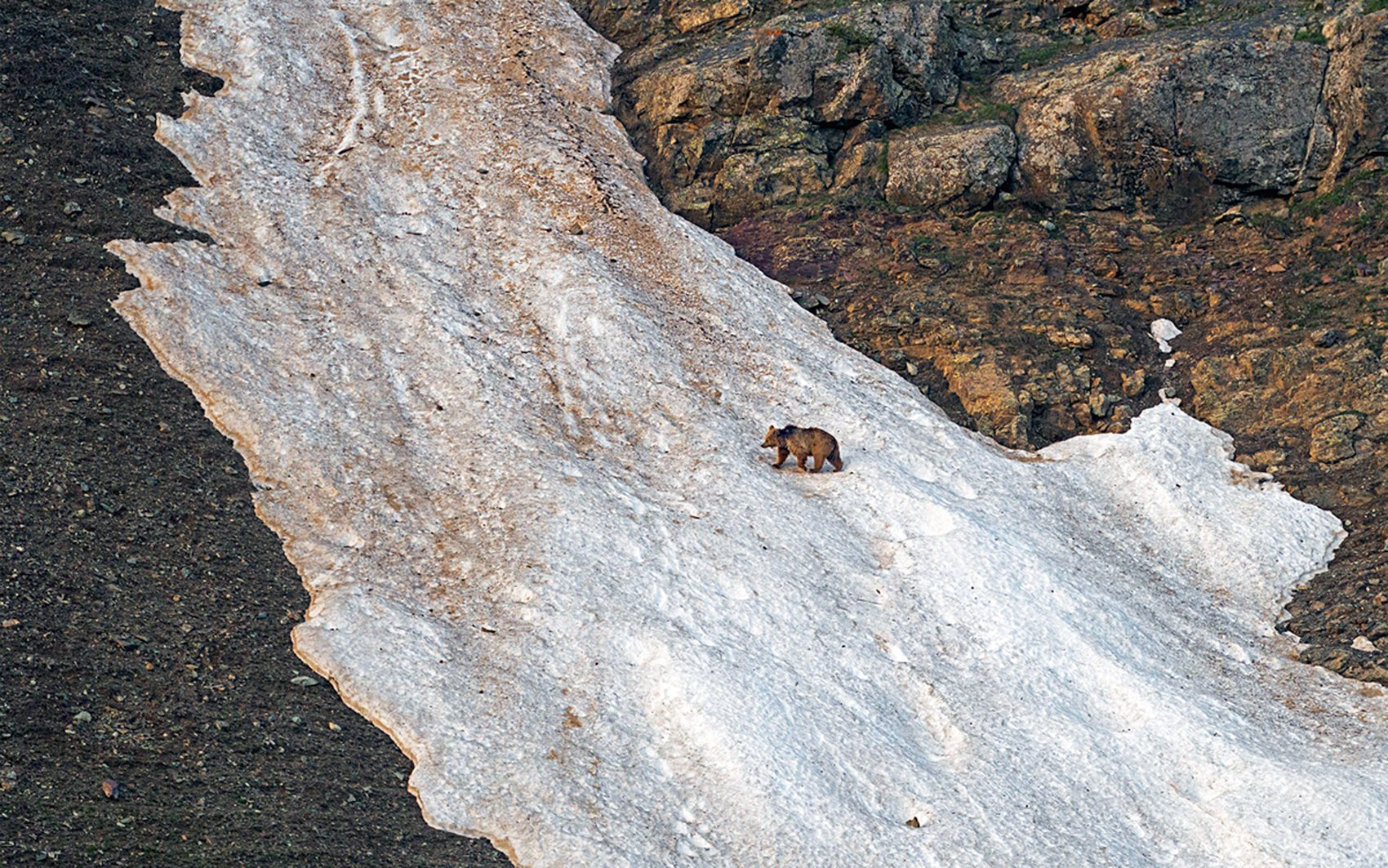
Himalayan brown bears normally hibernate until April-May. However, Drass bears have started becoming active as early as February, as observed by the photographer! Efficient waste management and free-ranging dog control are vital to the future of fringe bears.
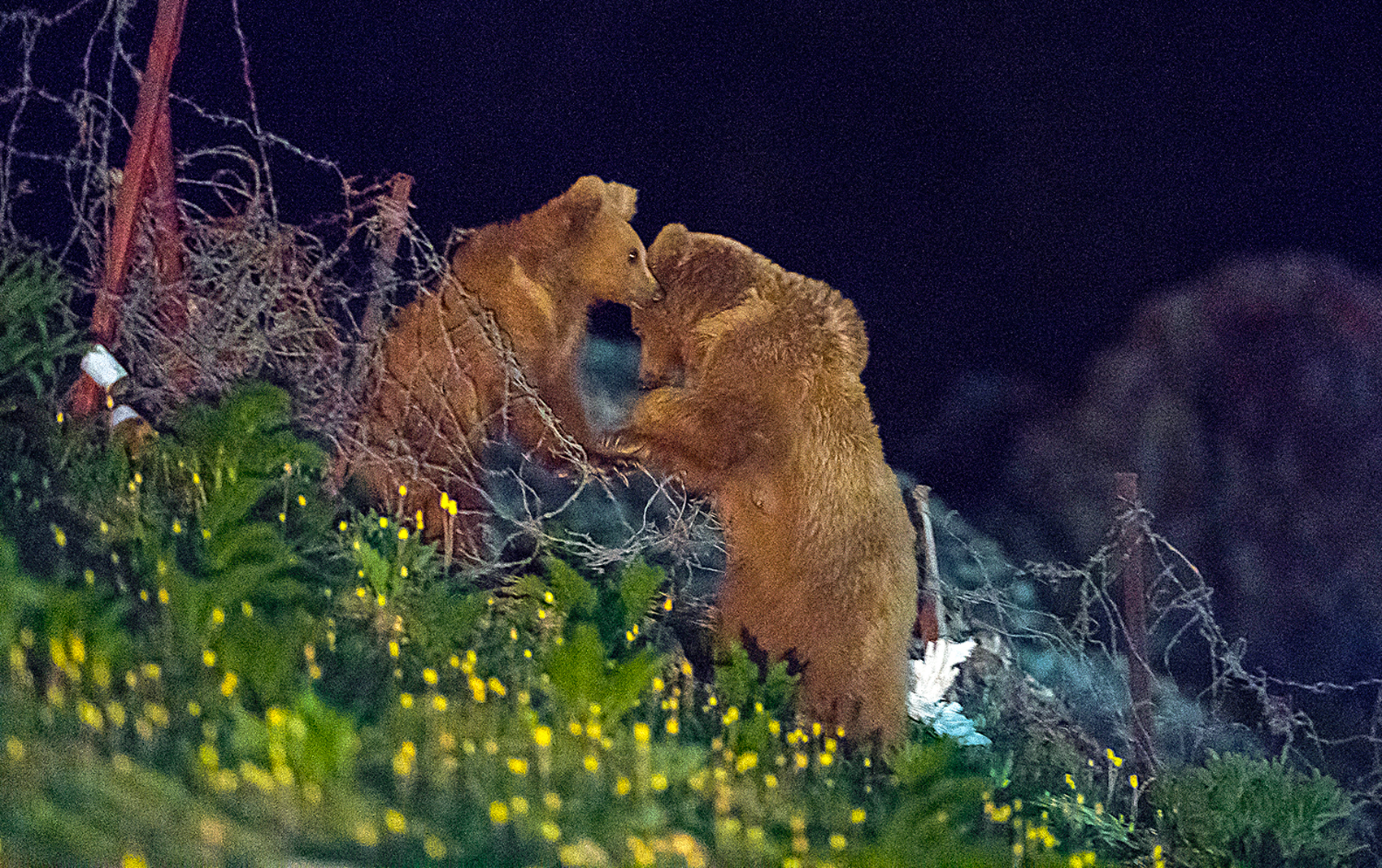
A mother helps her cub navigate sharp barbed wire spikes at an army camp in Bathra. The duo are regular visitors to the army camp. However, the innocuous search for food could inadvertently put their lives on the line.
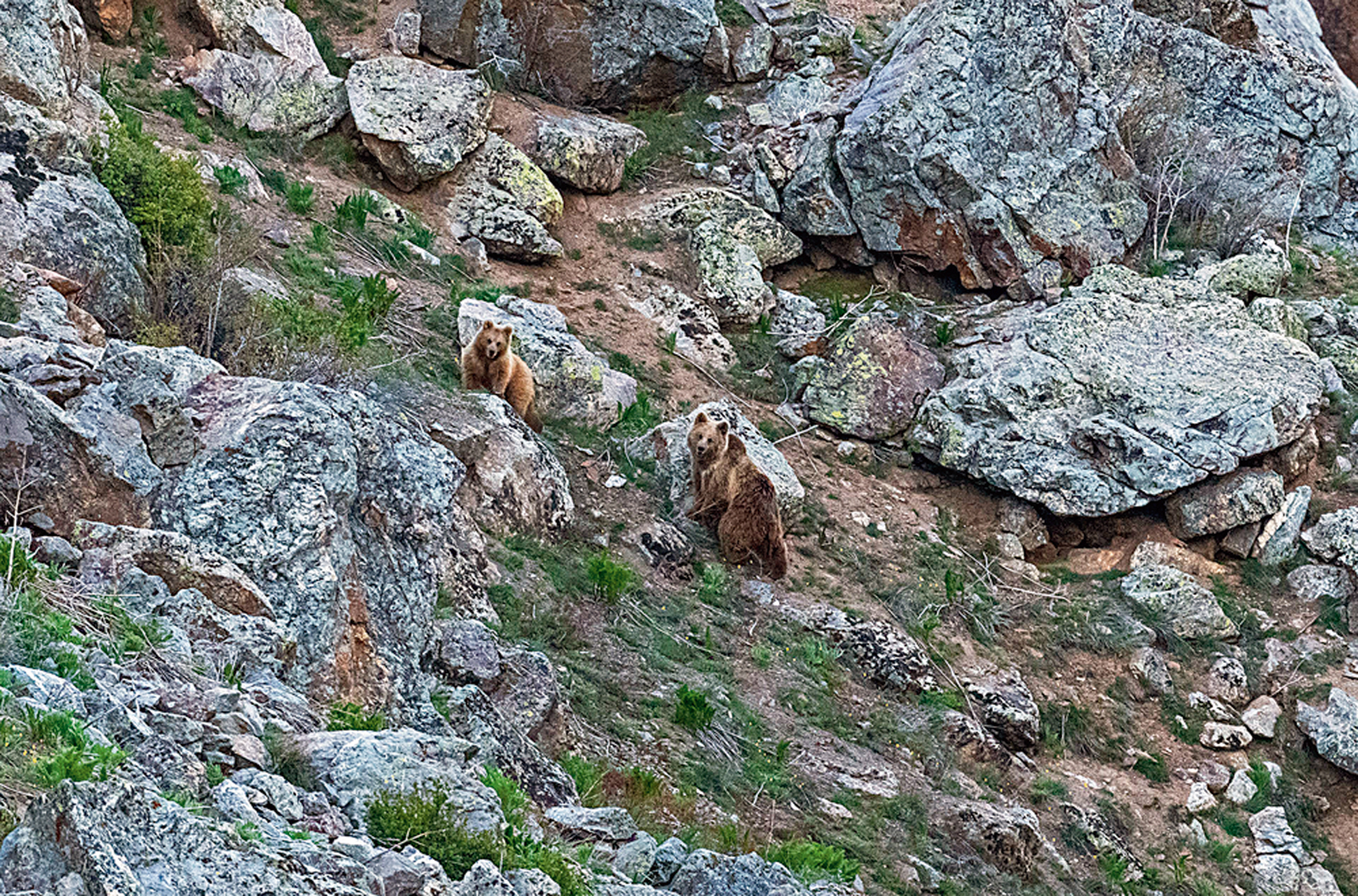
Another mother and cub pair give the photographer a quick glance in the early hours of the day before returning to their forest home after a night of scavenging. Using their olfactory sense, they were aware of the photographer’s presence from afar.
An accomplished and widely-travelled wildlife photographer and explorer, Dhritiman Mukherjee has won the Carl Zeiss Conservation Award for his work. He is also the co-author of Magical Biodiversity of India.








